Description
CHAPTER I
INTRODUCTION
1.1 BACKGROUND OF THE STUDY:
Undoubtedly, parts of the macroeconomic goals which the government strives to achieve are the maintenance of stable domestic price level and full employment. Macroeconomic performance is judged by three broad measures unemployment rate, inflation rate, and the growth rate of output Ugwuanyi, 2004.
Unemployment has been categorized as one of the serious impediments to social progress. Apart from representing an enormous waste of a countrys manpower resources, it generates welfare loss in terms of lower output thereby leading to lower income and wellbeing Raheem, 1993.
Inflation on the other hand, has been a major problem in the country over the years. Inflation is a household word in many market oriented economies. Although several people, producers, consumers, professionals, nonprofessionals, trade unionists, workers and the likes, talk frequently about inflation particularly if the situation has assumed a chronic character, yet only selected few know or even bother to know about the mechanics and consequences of inflation.
Prior to the emergence of what became to be known as the unemployment and inflation tradeoff or Phillips curve in 1958, unemployment and inflation were considered and treated in economics as distinct subjects. Keynes for instance described inflation as the excess of expenditure over income at full employment level. He contended that the greater the aggregate expenditure, the larger the inflationary gap and the more rapid the inflation. As for unemployment, the Keynesian economists hold that an increase in unemployment reduces income, which reduces consumption, and reduces aggregate output. As a result, employment can be increased by increasing consumption or investment.
Each school of thought offered its own policy solutions. There were however, no major attempts made to examine inflation and unemployment simultaneously.
It was not until 1958, following the introduction of Phillips curve by A.W. Phillips, that traditional economics began to examine unemployment and inflation simultaneously, thereby postulating a tradeoff between inflation and unemployment a lower inflation rate must be willing to put up with a higher level of unemployment, and vice versa. However, economists such as Milton Friedman and Edmund Phelps disapproved Phillips curve thesis, stating that the tradeoff between unemployment and inflation only existed in the short run and that in the long run, the Phillips curve is vertical. This led to the introduction of the Natural Rate Hypothesis.
The Nigerian experience of the crisis of unemployment and inflation was delayed until the early and mid 1980s with the collapse of oil prices on which the economy had become dangerously dependent on. Before the 1980s, previous records showed that the Nigerian economy was able to provide jobs for its increasing population, and was able to absorb considerable imported labour in the scientific sectors. The wage rate compared favourably with international standards, the inflation rate was moderate, and there was relative industrial peace in most industry subgroups.
A major consequence of the rapid depreciation of the naira was the sharp rise in the general price level inflation, leading to a significant decline in the real wages. The low wages in turn fuelled a weakening purchasing power of wage earners and a decline in the aggregate demand. Consequently, industries started to accumulate unintended inventories and, as a rational economic agent, the manufacturing firms started to rationalize their market prices. With the simultaneous rapid expansion in the educational sector, new entrants into the labour market increased beyond absorptive capacity of the economy. Thus, the avowed governments objective of achieving full employment failed.
The research work is therefore intended to access the applicability of the tradeoff thesis in Nigeria.
1.2 STATEMENT OF THE PROBLEM:
Anthony De Mello, in his famous book titled Awareness stated that, Life is a banquet. And the tragedy is that most people are starving to death. This situation is prevalent in the Nigerian economy. Nigeria is richly blessed with abundant human and natural resources, but still finds itself battling with high unemployment and inflation rates, due to years of neglect of the social infrastructures and general mismanagement of the economy. Previous governments in their own capacities have been embarking on various policies to control inflation and reduce the level of unemployment in the country. However, government efforts have not yielded the desired results as these problems are known to be skyrocketing rather than plummeting.
The problem of inflation in Nigeria was brought about by the oil glut in 1981, which resulted into balance of payment deficits leading to foreign exchange crisis that necessitated various measures of import restrictions. These restrictions reduced raw materials for domestic production and spare parts for machinery operation. The resultant shortage of goods and services for local consumption spurred the inflation rate to rise from 20 in 1981 to 39.1 in 1984 Itua, 2000.
In the light of the foregoing analysis, the research work will be guided by the following question:
1. Is there any tradeoff relationship between unemployment and inflation in Nigeria
2. Does government expenditure have any significant impact on unemployment
3. Do increases in the gross domestic help reduce unemployment
1.3 OBJECTIVE OF THE STUDY:
The primary objective of this study is to examine if there is any tradeoff relationship between unemployment and inflation in Nigeria. Other objectives include;
a. To ascertain the impact of government expenditure on unemployment.
b. To examine the impact of gross domestic product on unemployment.
1.4 THE RESEARCH HYPOTHESIS:
The study will be guided by the following hypothesis;
1. Null hypothesis Ho: There is no tradeoff relationship between unemployment and inflation in Nigeria.
2. Null hypothesis H0: Government expenditure has no impact on unemployment in Nigeria.
3. Null hypothesis H0: Gross domestic product has no significant impact on unemployment in Nigeria.
1.5 SIGNIFICANCE OF THE STUDY:
Why has unemployment and inflation continued to rise despite the substantial increase in the nations GDP Is it that successive governments neglected the issue of unemployment and inflation or has the twin problems defied all economic theories These are questions that need immediate answers, because unemployment and inflation are current issues that is affecting our country and which is being discussed by both experts and laymen alike.
Therefore, this study will be of paramount importance to economic decision makers, as it will equip them with the knowledge and skills needed to tackle the pressing issue of unemployment and inflation in our country. Also, to those who would like to carry out further research on this topic, it would be of valuable help in the course of their research.
1.6 SCOPE OF THE STUDY:
The research work intends to study unemployment and inflation situation within the Nigerian economy. The study will cover the time period 19862011 a period of 25 years; this is to ensure updated information and to follow the trend. The range was chosen based on data availability and to have adequate observation for a meaningful analysis.
1.7 LIMITATIONS OF THE STUDY:
When carrying out research in social sciences, the data that one generally encounters are non-experimental in nature, that is, not subject to the control of the researcher. Therefore, this lack of control may create special problems for the researcher in pinning down the exact relationship that exists between unemployment and inflation in Nigeria.
In the course of the study, the researcher tried to access the CBN statistical bulletin of 2010, but was unable to get data for the figures of unemployment and inflation in 2011. He therefore resorted to accessing the internet for the missing figure for 2011. The researcher also encountered the challenge of inadequate and incomplete information from the internet and the school library. The researcher was also faced with the problem of unavailability of funds to carry out the research work.

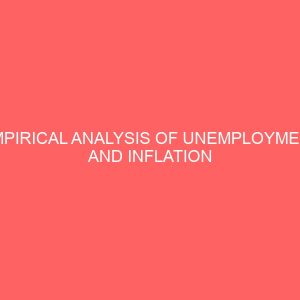
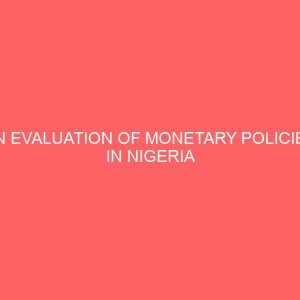

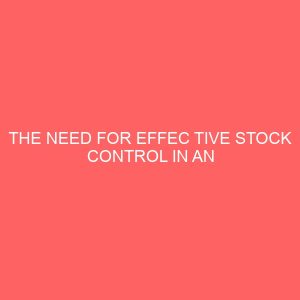
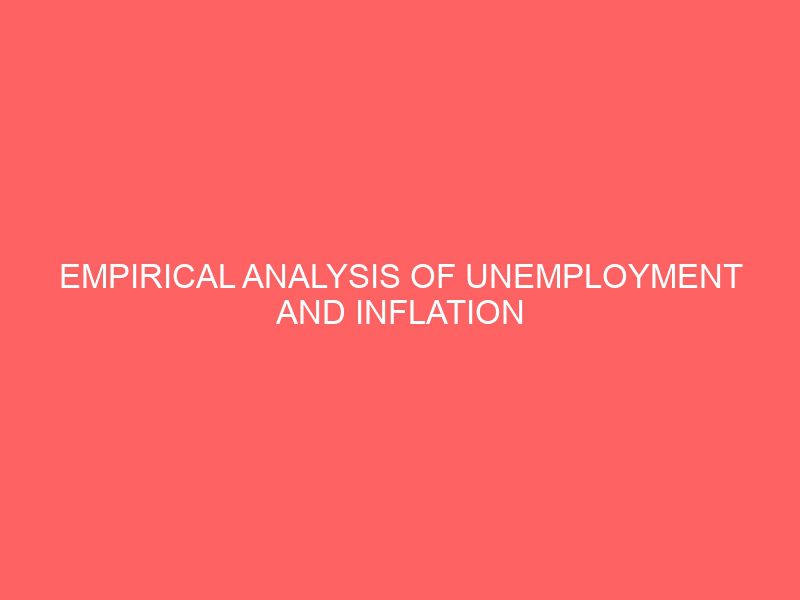
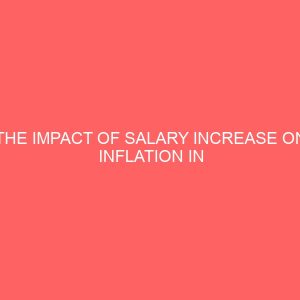
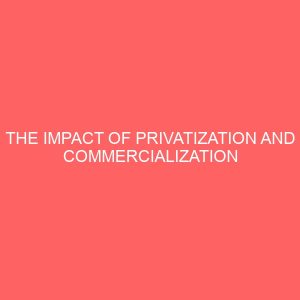
Reviews
There are no reviews yet.